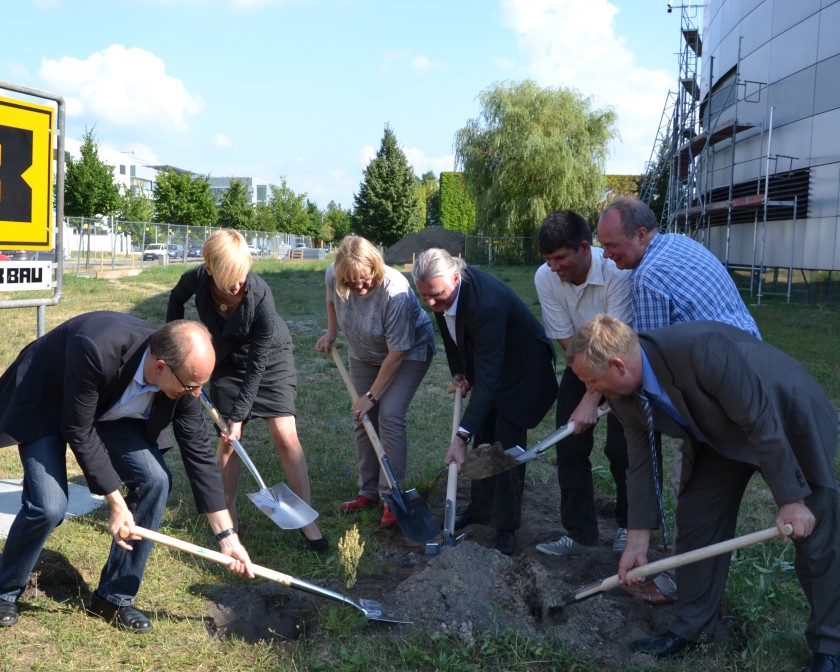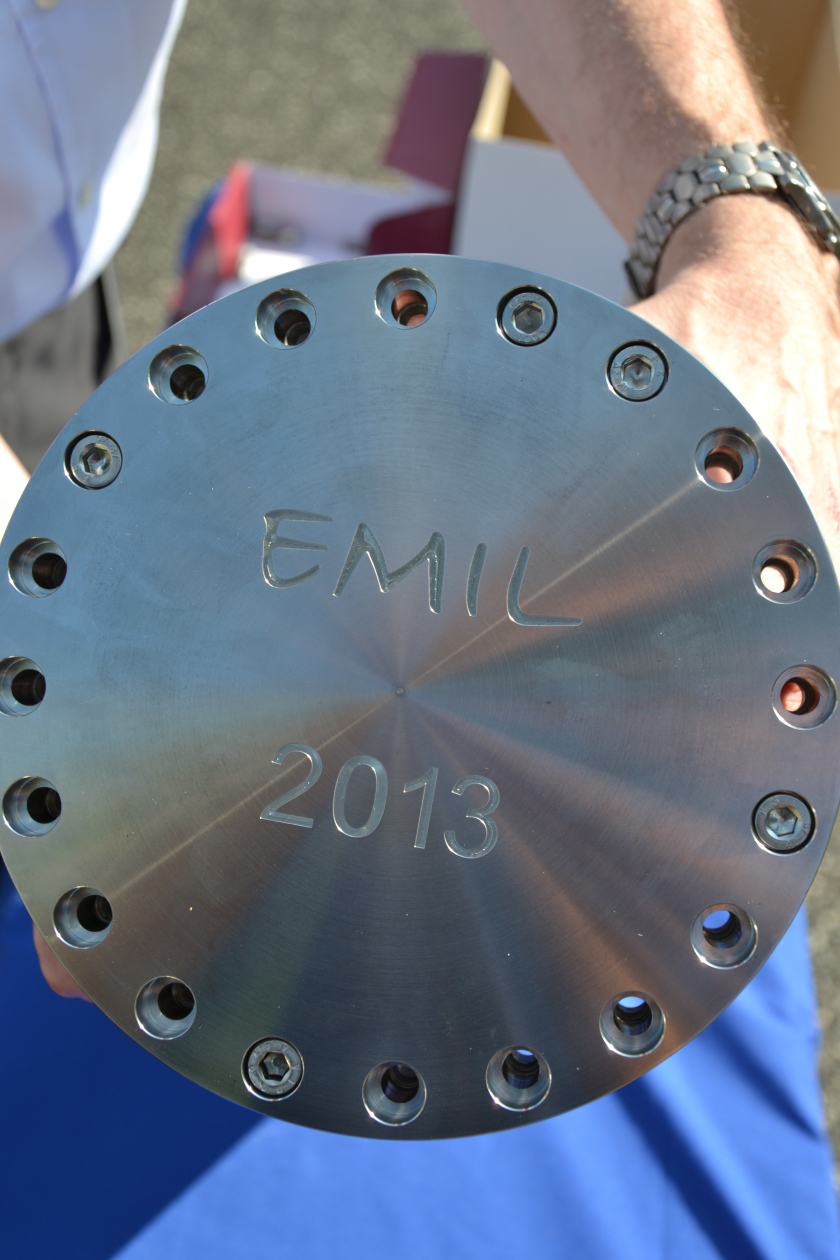Groundbreaking for EMIL

Burial of the time capsule was part of the groundbreaking ceremony. Seen here are Klaus Lips, Anke Kaysser-Pyzalla, Birgit Schröder-Smeibidl, Markus Hammes, Bernd Rech, Axel Knop-Gericke (CAT project leader of the MPG's Fritz Haber Institute) and Thomas Frederking. Photo: Andreas Kubatzki/HZB

In addition to the August 5, 2013 daily paper and the EMIL blueprints, archaeologists of the future will also discover samples of thin film solar cells from the year 2013 inside the time capsule. Photo: Andreas Kubatzki/HZB
On Monday, August 5, 2013, a festive groundbreaking ceremony was the official signal for the start of construction of the new BESSY II research lab EMIL. The new cutting-edge solar energy and catalysis research preparation and analysis lab "Energy Materials In-Situ Laboratory Berlin" will be a direct BESSY II add-on. The joint project by the HZB and the Max Planck Society provides a one-of-a-kind infrastructure for the interdisciplinary and industry compatible development of new materials and technologies to facilitate the energy transition. This includes new material systems for solar modules as well as storage solutions for which new kinds of catalysts are warranted.
"Construction of EMIL is a sure-fire sign of the HZB's commitment to expanding our energy research focus. These kinds of unparalleled infrastructures are an important prerequisite for energy technology progress," said Prof. Anke-Rita Kaysser-Pyzalla, the HZB's scientific director. She took the occasion to thank all those involved at the HZB, the project executing organisation Jülich, the funding bodies as well as the various agencies for their formidable commitment to preparing and supporting the building project.
In his speech, the head of the project, Prof. Klaus Lips, made reference to the young hero in Erich Kästner's children's classic "Emil and the detectives," who personifies the new lab's mission. "Just as Emil went out looking for allies, here, too, it's all about putting together a strong team and figuring out solar cell losses using scientific detective work," Lips explained. "Beginning in 2015, we will be able to use EMIL for analysing the different processes that take place at the interfaces during production of thin film solar cells or catalysts under real-life conditions and even use depth-resolved observation."
Next, head architect Markus Hammes commented on the building's design: "We made a conscious effort to model the EMIL building on the storage ring's form language so EMIL will have the appearance of a pulled-out drawer as an integral part of the BESSY II building, albeit with its own separate function."
Lastly, Dr. Gerd Reichardt, EMIL's technology project manager, stuffed a time capsule made from solid stainless steel with a copy of Erich Kästner's novel, the daily paper, and the building blueprints, as well as with several samples of cutting-edge thin film photovoltaics, and then buried it in the ground underneath the construction site. The topping out ceremony has been scheduled for end-of-year 2013 to ensure the labs are up and running by late 2014.
arö
https://www.helmholtz-berlin.de/pubbin/news_seite?nid=13771;sprache=en
- Copy link
-
Battery research with the HZB X-ray microscope
New cathode materials are being developed to further increase the capacity of lithium batteries. Multilayer lithium-rich transition metal oxides (LRTMOs) offer particularly high energy density. However, their capacity decreases with each charging cycle due to structural and chemical changes. Using X-ray methods at BESSY II, teams from several Chinese research institutions have now investigated these changes for the first time with highest precision: at the unique X-ray microscope, they were able to observe morphological and structural developments on the nanometre scale and also clarify chemical changes.
-
BESSY II: New procedure for better thermoplastics
Bio-based thermoplastics are produced from renewable organic materials and can be recycled after use. Their resilience can be improved by blending bio-based thermoplastics with other thermoplastics. However, the interface between the materials in these blends sometimes requires enhancement to achieve optimal properties. A team from the Eindhoven University of Technology in the Netherlands has now investigated at BESSY II how a new process enables thermoplastic blends with a high interfacial strength to be made from two base materials: Images taken at the new nano station of the IRIS beamline showed that nanocrystalline layers form during the process, which increase material performance.
-
Hydrogen: Breakthrough in alkaline membrane electrolysers
A team from the Technical University of Berlin, HZB, IMTEK (University of Freiburg) and Siemens Energy has developed a highly efficient alkaline membrane electrolyser that approaches the performance of established PEM electrolysers. What makes this achievement remarkable is the use of inexpensive nickel compounds for the anode catalyst, replacing costly and rare iridium. At BESSY II, the team was able to elucidate the catalytic processes in detail using operando measurements, and a theory team (USA, Singapore) provided a consistent molecular description. In Freiburg, prototype cells were built using a new coating process and tested in operation. The results have been published in the prestigious journal Nature Catalysis.
